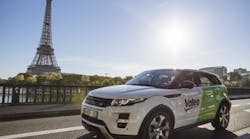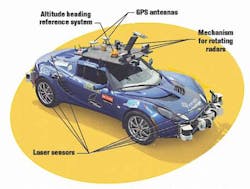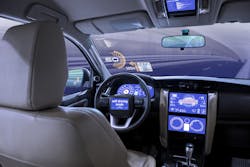With early tech adopters such as Google, Tesla, and Uber already experimenting with driverless cars—and recording impressive results, at that—there are no more doubts that the world is staring at the greatest revolution in both the transport and tech sectors. Many changes are imminent: Human drivers are likely to pave the way for computers, traditional car steering will be replaced by tech-rich algorithms, and roads will become safer and more organized.
The most interesting wrinkle to this new development, however, is the fact that autonomous cars are more like a new addition to a wider sensation of smart technology. Homes are already smart, handheld devices are smart as well, and now the cars will soon be smart. Smartphones, on the other hand, are now leading in device connections world over, superseding navigation devices and cellular tablets combined. Additionally, they have also found their way in health-related devices, such as hearing devices, enabling people to control the volume or even connect with the TV in order to hear the audio. In simple terms, smartphones and autonomous vehicles (AVs) are both at the center of the looming technological paradigm shift.
There are multiple technologies that will have to work together for a fully autonomous vehicle. For security, smartphones will probably have a completely different system that isn’t connected to the drive train other than controlling the destination, and maybe braking.
Is it possible for smartphones and driverless cars to integrate? To this end, we have already seen how smartphones have thrived both as telematics and entertainment devices in vehicles. But their use is likely to broaden with the adoption of driverless cars, as they will potentially occupy the center stage in autonomous driving. This is easy to predict given that most telecommunication companies have been investing heavily in powerful, postmodern broadband networks in readiness for the much-anticipated rolling out of the driverless technology.
According to statistics, more than 4 billion people across the world are subscribed to at least one broadband network, which is about 52% of all smartphone owners. People can now easily connect their lighting and heating systems, doors, watches, refrigerators, and a host of other smart devices to their smartphones for easy accessibility. Bandwidth networks have also grown tremendously, advancing from 2G connections a few years back to the current 5G. Further growth is well in the pipeline, so smartphones will soon be able to connect at the highest level.
The implication of all these changes is that smartphones are preparing the way for the driverless technology, to the effect that by the time people will start buying AVs, they will already be thinking of how to integrate them with their smartphones. So yes, it is possible for smartphones and driverless cars to integrate.
There is still work to be done but with companies trying to get consumer’s attention, it may not be long until driverless services like the type Uber is working on, is littered with screen and ads.
Which role will smartphones play in autonomous driving? Owners of driverless cars will need to securely connect their smartphones and their cars, and then authorize the phone to control selected functions in the car. Here are some of the functions that smartphones will potentially partake in the driverless technology:
- Smartphones will be used to control AVs from remote locations. App development companies are already experimenting with innovative apps that can remotely lock and unlock a car, turn radio/music systems in a car on or off, and control a car’s cooling system.
- Finding your car in a crowded parking lot will be easy once you connect it to your smartphone. Going forward, smartphone apps will not only help you locate your car but will also help you monitor its whereabouts 24 hours a day.
- Texting, calling, and managing music playlists on your phone are now easy functions to safely perform on the phone even when driving. Smartphones are also largely used for GPS tracking and direction functions in modern cars. Driverless cars will take this functionality a notch higher.
- When riding in an autonomous car, you will be able to direct its destination using your smartphone instead of the steering wheel. Because both the car and the phone are computerized, the two will complement each other to help you get more done even when on the road. This is among the surest ways through which the world will keep up with the fast-changing economy.
- Instant braking is among the features that set autonomous cars apart from the rest. They use sensors to detect possible interferences in the form of road obstacles and oncoming cars, and then apply instant breaks to avoid collisions. Using a smartphone connected to the car could provide additional braking or act as a backup in case the car fails to brake automatically.



